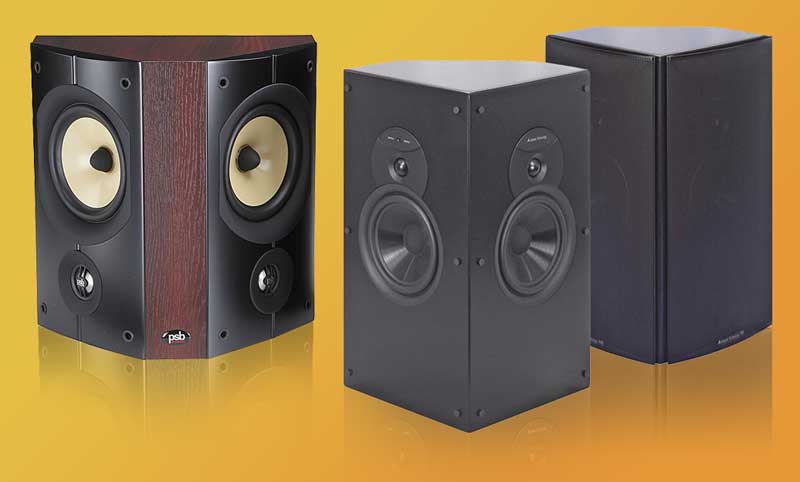Best Speaker for Surround Placed Near Couch
So many people have limited placement options when setting up their surround sound system. They can usually place their front speakers around their TVs, but the surround speakers end up being a problem. Either they have too little room to the sides of their couch, or too much. Either way, they end up with a surround speaker that may be placed very near the arm of the couch. When this happens, the person sitting there gets an earful of sound. But is there a perfect speaker for this placement? Yes, there is! And it isn’t the one that Dolby recommends!
Dolby Suggested Speakers Won’t Work
When Dolby introduced Atmos, they recommended that all the speakers in your surround system be monopoles. Monopole means that the speakers fire in one direction. If you think about any normal floorstanding or bookshelf speaker, those are monopoles. Dolby prefers these for Atmos because they are better at “placing” sounds in the room.
But, before Atmos, there were other types of surround speakers. These speakers were usually trapezoidal in shape and were designed to give a more diffuse sound. The idea was to replicate the experience of being in a movie theater where you’d often find multiple side surround speakers placed very far from your seat. For this, we often recommended bipole speakers.
A Surround Speaker Placed Near a Couch Poses a Specific Problem
The problem, of course, is volume. When you must place your surround speaker (or speakers) very close to a seated position on a couch, that speaker will be overwhelming to anyone sitting on that side. That’s not fun and surely won’t be very pleasant.
There is a solution.
The Resurrection of the Dipole Speaker
Dipole speakers look nearly identical to bipole speakers. They are usually trapezoidal, they usually have tweeters and woofers pointing in different directions, and they are meant to provide a diffuse sound. The difference is in phase. The bipole speaker has all the drivers firing in phase. This means when the woofer or tweeter on one side pushes out, so does the woofer or tweeter on the other side. Many speakers with this configuration can be configured for bipole or dipole operation with a switch on the back.

The dipole speaker is different. With a dipole, the drivers are out of phase. This means that when the tweeter/woofer is pushing out on one side, they are pulling in on the other. This creates a unique phenomenon. If you sit with your head directly between the two sides of the speaker (at the apex of the forward-facing corner), the sound is canceled out.
We call this a null. A null is when the sound waves interact with each other destructively so that the sound is reduced in volume. This is exactly how the noise-canceling function on your headphones works. They create an inverse wave to cancel out the outside sounds.
Sitting in the Null
If you carefully place your surround dipole speaker, suddenly that seat at the end of the couch isn’t so unbearable. That null means that the surround effect is preserved without the speaker being overly loud for the person in the end seat. Sure, you may not get the best Atmos experience, but it will still be pretty good. And now you can use every seat on your couch without worrying about a surround speaker being placed too close.



With 2 rows where do you recommend placing side surrounds? If second row doesn’t get used much then I would guess placing appropriate for 1st row makes more sense. However if second row will get used frequently what then? In between the rows? Same question for 4 atmos. Thanks.
For Atmos, check out this article. The advice for the side surrounds is nearly the same. If you care about one row more than the other, place them optimally for that row. If you care about both, get two pairs of side surrounds, wire them in series, and place each pair optimally for each row. That’s essentially how it is done in movie theaters.